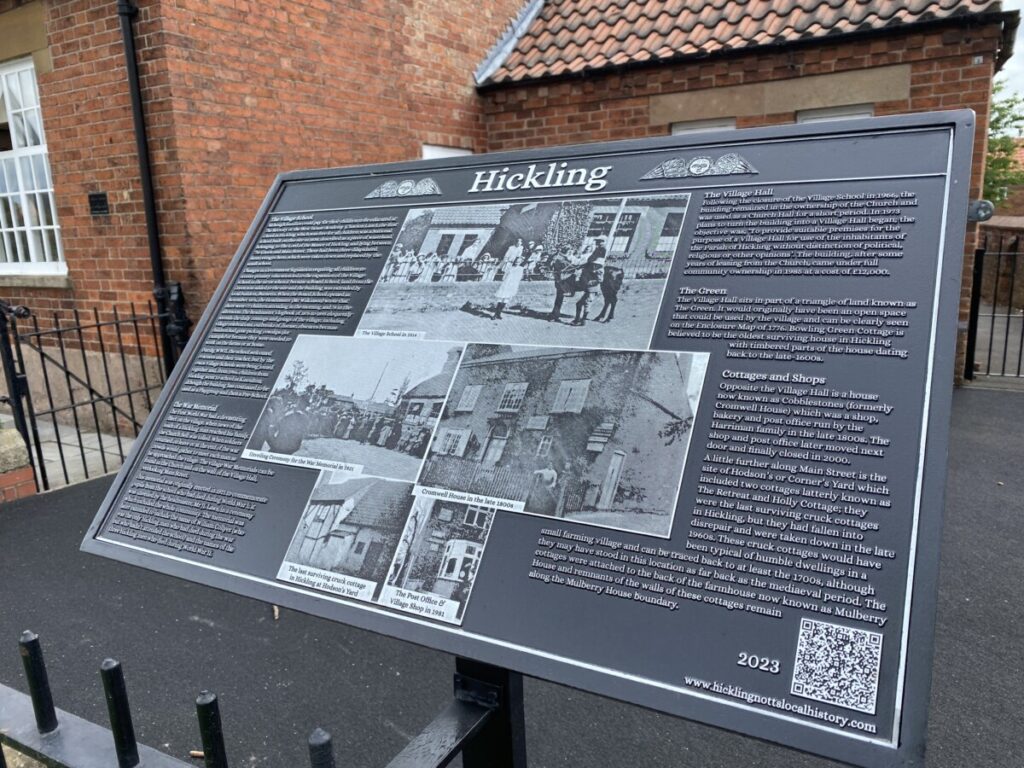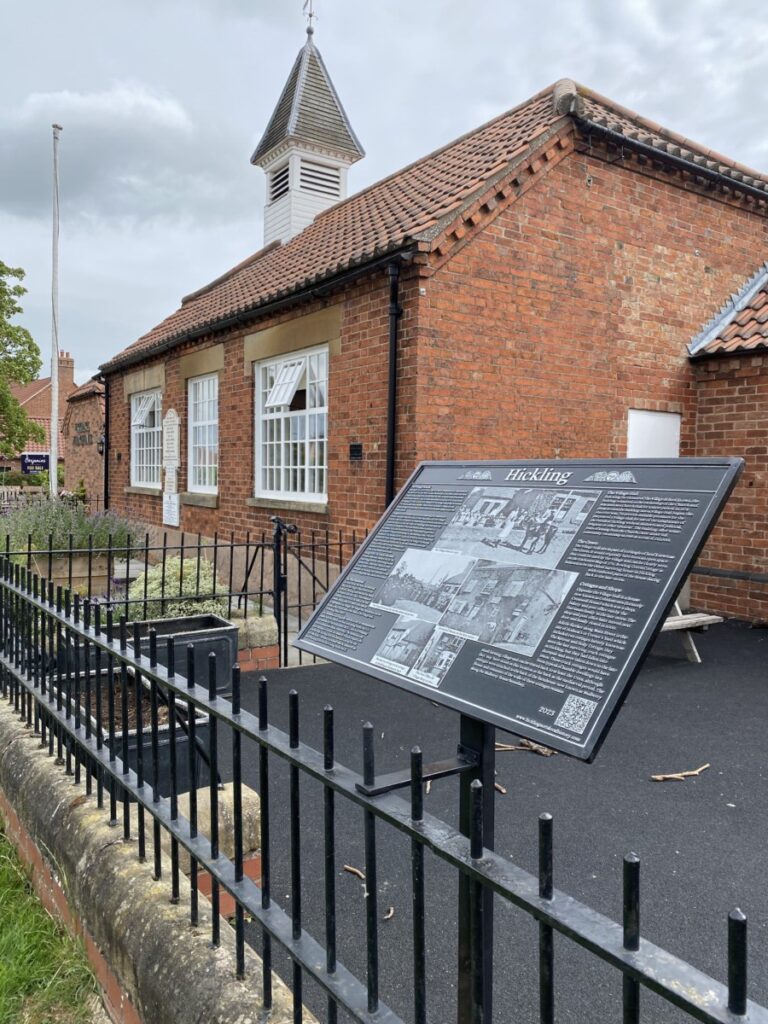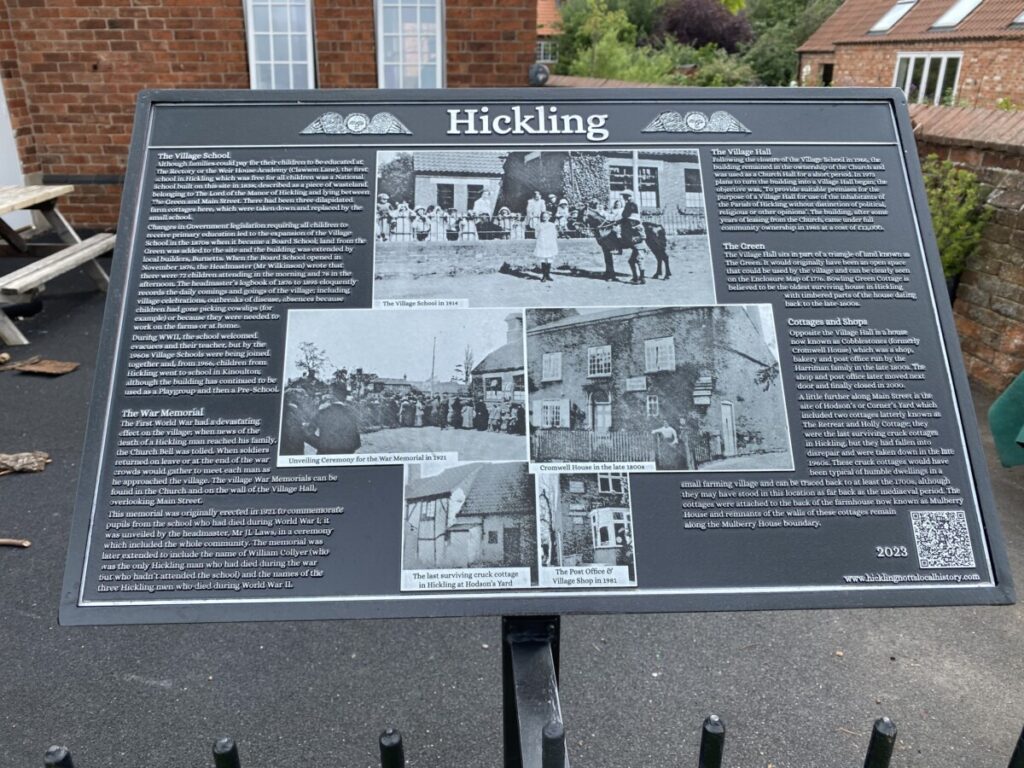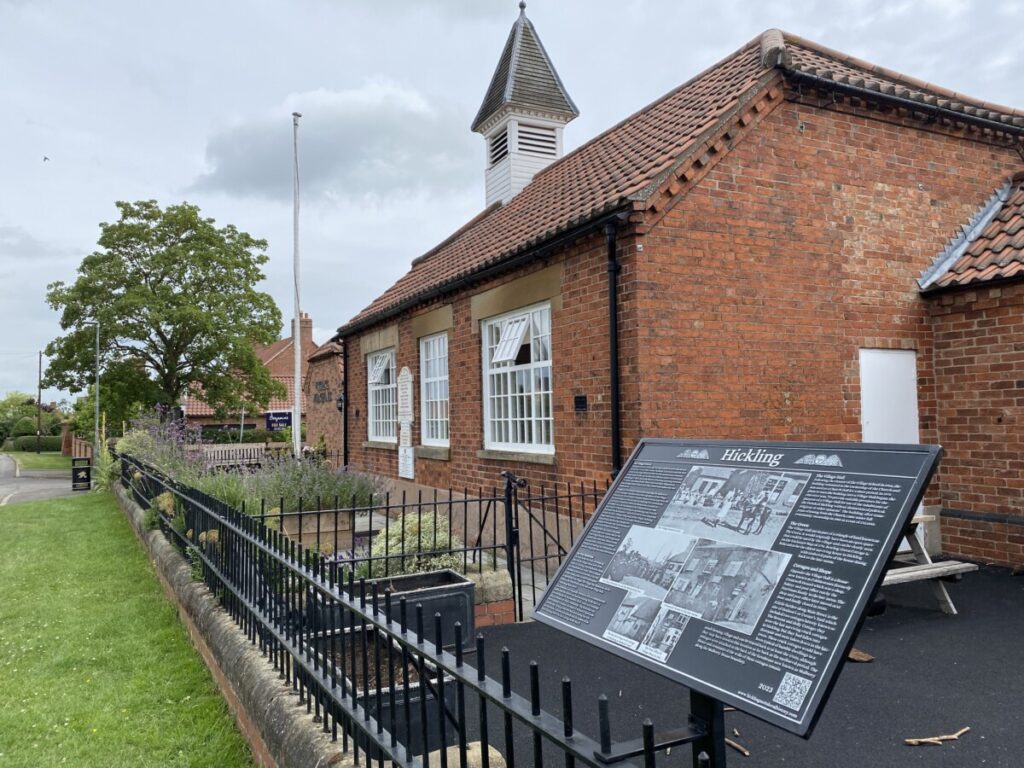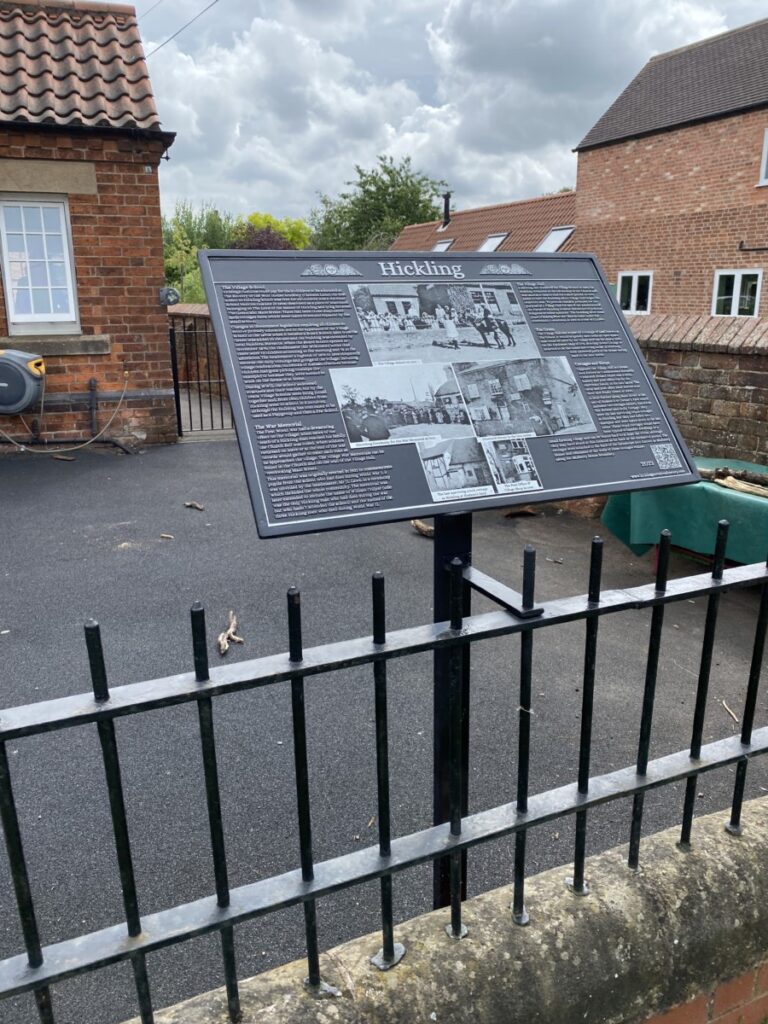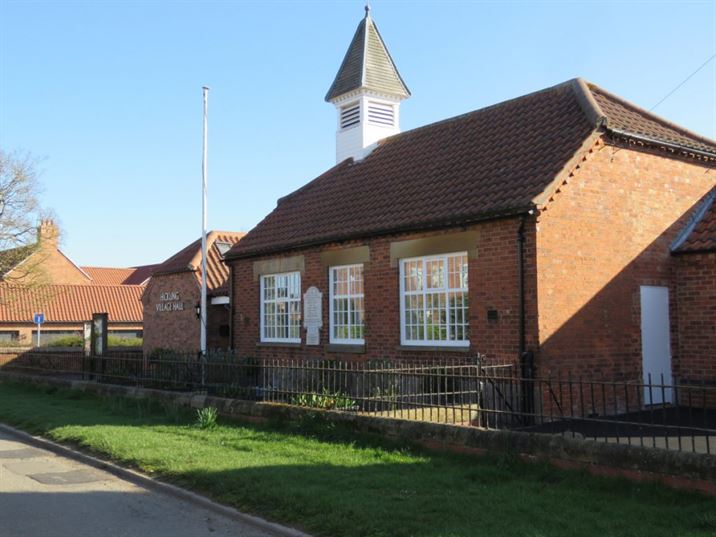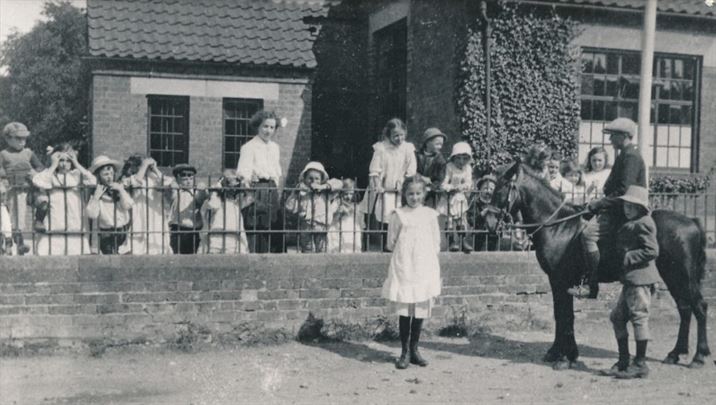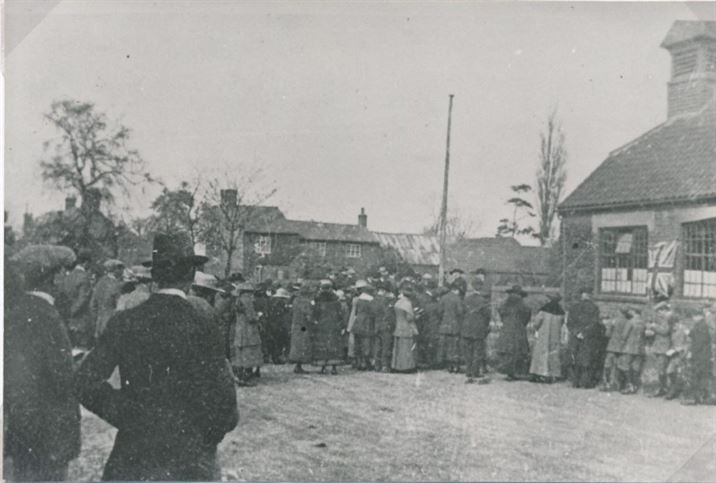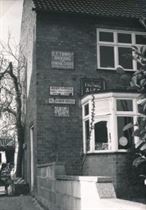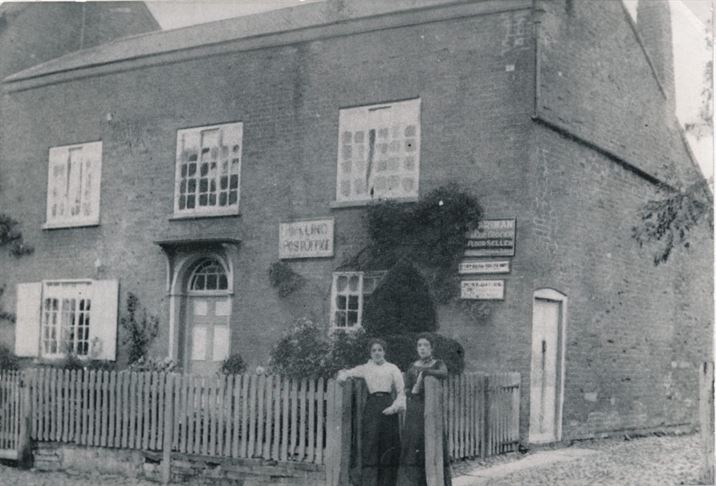This Information Panel was installed outside the Village Hall in late June 2023.
We are very grateful to the Village Hall Committee for all their help and support and also to everyone who has helped us with donations, including our Borough Councillor, Tina Combellack.
We are also very grateful to Photocast who created the zinc-etched panel and to local craftsman, Jak Cotterill who designed, made and fitted the lectern stand.
The text featuring on the Village Hall panel:
(please follow the links at the top of the page to explore the separate sections in more detail).
The Village School.
Although families could pay for their children to be educated at The Rectory or the Weir House Academy (Clawson Lane), the first school in Hickling which was free for all children was a National School built on this site in 1838; described as a piece of wasteland belonging to The Lord of the Manor of Hickling and lying between The Green and Main Street. There had been three dilapidated farm cottages here, which were taken down and replaced by the small school.
Changes in Government legislation requiring all children to receive primary education led to the expansion of the Village School in the 1870s when it became a Board School; land from the Green was added to the site and the building was extended by local builders, Burnetts. When the Board School opened in November 1876, the Headmaster (Mr Wilkinson) wrote that there were 72 children attending in the morning and 78 in the afternoon. The headmaster’s logbook of 1876 to 1895 eloquently records the daily comings and goings of the village; including village celebrations, outbreaks of disease, absences because children had gone picking cowslips (for example) or because they were needed to work on the farms or at home.
During WWII, the school welcomed evacuees and their teacher, but by the 1960s Village Schools were being joined together and, from 1966, children from Hickling went to school in Kinoulton; although the building has continued to be used as a Playgroup and then a Pre-School.
The Village Hall.
Following the closure of the Village School in 1966, the building remained in the ownership of the Church and was used as a Church Hall for a short period. In 1973 plans to turn the building into a Village Hall began; the objective was, ‘To provide suitable premises for the purpose of a Village Hall for use of the inhabitants of the Parish of Hickling without distinction of political, religious or other opinions.’ The building, after some years of leasing from the Church, came under full community ownership in 1985 at a cost of £12,000.
The War Memorial.
The First World War had a devastating effect on the village; when news of the death of a Hickling man reached his family, the Church Bell was tolled. When soldiers returned on leave or at the end of the war crowds would gather to meet each man as he approached the village. The village War Memorials can be found in the Church and on the wall of the Village Hall, overlooking Main Street. This memorial was originally erected in 1921 to commemorate pupils from the school who had died during World War I; it was unveiled by the headmaster, Mr JL Laws, in a ceremony which included the whole community. The memorial was later extended to include the name of William Collyer (who was the only Hickling man who had died during the war but who hadn’t attended the school) and the names of the three Hickling men who died during World War II.
The Green.
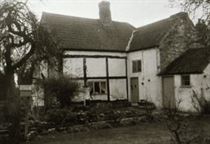
The Village Hall sits in part of a triangle of land known as The Green. It would originally have been an open space that could be used by the village and can be clearly seen on the Enclosure Map of 1776. Bowling Green Cottage is believed to be the oldest surviving house in Hickling with timbered parts of the house dating back to the late-1600s.
Cottages and Shops.
Opposite the Village Hall is a house now known as Cobblestones (formerly Cromwell House) which was a shop, bakery and post office run by the Harriman family in the late 1800s. The shop and post office later moved next door and finally closed in 2000.
A little further along Main Street is the site of Hodson’s or Corner’s Yard which included two cottages latterly known as The Retreat and Holly Cottage; they were the last surviving cruck cottages in Hickling, but they had fallen into disrepair and were taken down in the late 1960s. These cruck cottages would have been typical of humble dwellings in a small farming village and can be traced back to at least the 1700s, although they may have stood in this location as far back as the mediaeval period. The cottages were attached to the back of the farmhouse now known as Mulberry House and remnants of the walls of these cottages remain along the Mulberry House boundary.

